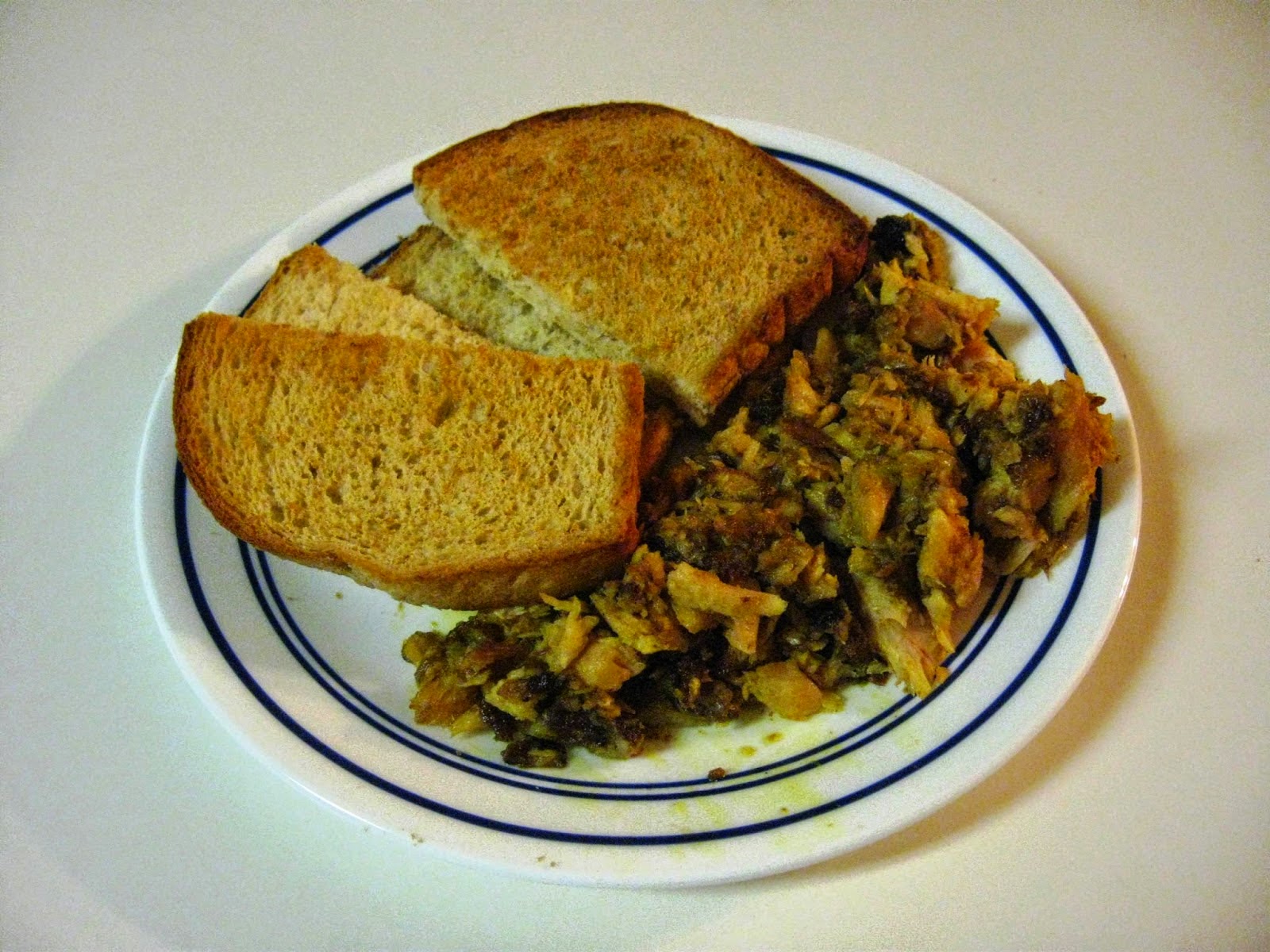Here I am! Finally back and posting on the blog! For those of you who do not know, I am finishing my last year of undergraduate studies, and cooking/baking in my apartment during my busy week is near impossible. Most of the historic cooking I have been doing has been in the hearth kitchen at
Historic Locust Grove, which is amazing and fun and awesome, but I barely have any pictures of that and the recipes I make there don't necessarily line up with what the challenges are. However, I did realize that I was going to be remaking a recipe I made for the recent Christmastide event, which is definitely feared or revered by most...
Fruitcake!
Specifically, a pound plumb cake from The Housekeeper’s Instructor, by William Augustus Henderson,
1809
To be honest, I did not hold fast to this recipe. What I made ended up being an amalgam of a few pound cake recipes I have made. My tried-and-true recipe follows:
1 pound butter
1 pound sugar
1 pound eggs (about 9 large eggs)
1 whole nutmeg grated, or 1 tbsp ground nutmeg
The zest of 1 lemon
1 gill (4 oz) of brandy or cognac
1 pound flour
1/3 pound currants
1/3 pound candied orange peel
1/3 pound candied lemon peel
Preheat your oven to 350. Start by creaming your butter and sugar together:
Next, add your eggs. About 9 large eggs equal one pound, but it's always good to use your handy dandy scale to help measure.
Mix your eggs and butter/sugar until smooth. Now it's time to add the fun things! Throw in the nutmeg, brandy, and lemon zest, and mix. I left out the lemon zest this time because of the inclusion of candied lemon peel. It's definitely cook's choice. Also, sometimes you realize that your bowl is too small in the middle of baking. Introducing great green bowl!
Measure out a pound of flour and mix in. The batter will stiffen considerably and become more like the cake batter you know and love.
Finish the cake off by stirring in the candied lemon and orange peel and currants.
I find that stirring this in works the best, since the hand mixer can be a little harsh. I just used a rubber spatula.
Pour the batter into two greased 8-inch cake pans and bake for about an hour, or until a toothpick comes out of the center clean.
Allow to cool on the counter completely, then remove from pans. If you'd like an extra kick of flavor, I recommend soaking the cakes in brandy for anywhere between a week and a month. To do this, simply soak a paper towel with brandy and lay them on the cakes within a plastic bag. Replace the paper towel every couple of days. The brandy helps to keep the cake moist and to develop the flavors of the fruit, so it is definitely enjoyable.
Delicious finished cakes waiting for a brandy bath!
When I was doing my research for these cakes, I desperately wanted to find evidence of using marzipan as an "icing", but unfortunately I did not find any examples of this. Most of the icings that I found from this period were actually whipper meringues that were then hardened onto the cake using either a salamander or simply proximity to the fire. Henderson has one example of a recipe here:
The first recipe is the one I took inspiration from, but since meringue is so finicky I decided to use a recipe that I have used for years now. I now realize that the second recipe in the image would have yielded a similar taste to marzipan, but oh well! The meringue icing is the perfect touch for this cake.
Meringue icing
2 egg whites
1/4 tsp cream of tartar
Pinch of salt
1/2 cup white sugar
Preheat oven to 225. Beat the egg whites until foamy. Add cream of tartar, salt, and sugar, and beat until stiff peaks form. Place cakes on parchment paper on baking sheets. Spread a thin layer on cakes and bake for 1 hour. Leave cakes to cool in oven with door slightly ajar.
This cake is so delicious that it can't even be classified as fruitcake. It has none of the flavors that you would typically associate with Granny's fruitcake, and the density of fruit isn't so high that you wonder if there is even cake. The nutmeg and lemon work perfectly together, and the brandy helps to merge the flavors. All in all, I would highly, highly recommend it!
The Challenge: #14: Fear Factor
The Recipe: See above!
The Date/Year and Region: Europe/America, early 19th century
How Did You Make It: See above, again
Time to Complete: It takes about 30 minutes to get the batter together, and another hour to bake. The meringue takes 15 minutes to make an an hour to bake, as well.
Total Cost: The fruit was the most expensive, topping in at $10 per batch of cake. The other items were mostly lying around. I would guess that two brandy-soaked meringued cakes cost about $20.
How Successful Was It?: This cake is amazing. It's the perfect density with the fruit in the heavy pound cake base. The meringue icing and brandy soak are really awesome additions to an already great cake!
How Accurate Is It?: Somewhat diverged from the original recipes, but in relatively accurate fashions. Cream of tartar wasn't available in the period, and the currant question (whether fresh currants or dried "currants" [actually raisins] were meant is a conundrum) is always on my mind, though I don't think they would have called for preserved fruits (candied lemon and orange peel) to be mixed with fresh in the same cake. I would guess that it is about 90% accurate to the period













































